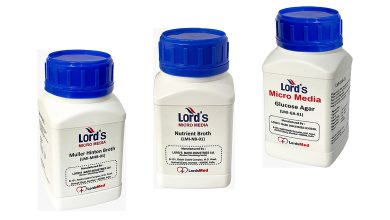Healthcare Leader: Dr S Prakash
Managing Director, Star Health and Allied Insurance Co

Lockdown and COVID-19 have given rise to a golden era for health insurance. No amount of effort put by a regulator or insurance companies would have created such an amount of awareness among the general public on the need and requirement of health insurance which is now created by COVID-19. This impact is not a short-term impact as it has changed the mindset of people. Health insurance is now purchased for its real purpose i.e. financial protection at the time of need. When any insurance is purchased as a real financial protection law of a large number will work and the probability of loss gets limited. Otherwise, health insurance is purchased only when there is an adverse health history where the probability of occurrence of loss is much higher. We have been requesting our marketing team to sell policies of the higher sum insured but they were reluctant. Now the same marketing persons are vehemently pitching for policies with higher sum insured. The real meaning of adequacy of sum insured is understood by an insured when he gets to know from social media about huge hospitalisation bills for COVID-19 treatment in hospitals.
The realisation of the need for insurance protection is now very well understood, however, availability of surplus money in the hands of
industry or individual is prerequisite for growth of insurance
Concept of health insurance marketing has changed, people with the age group of below 45 were reluctant to go for health insurance but now COVID-19 made them realise that age has no bearing when it comes to COVID and made them buy health insurance. Similarly, when the floater concept was introduced in 1997, it was felt that in a family only one or two may get hospitalised during the year and the floater sum insured is sufficient to take care of their hospitalisation. Now COVID-19 has made them think otherwise as the entire family was required to get hospitalised and sum insured under floater policy found to be inadequate. This has given rise to the purchase of additional policies or top-up policies to take care of likely huge hospitalisation expenses. Health insurance premium figures for the first half of this financial year reflects the impact of COVID-19 on health insurance.
Though the overall growth in health insurance premium is only 16 per cent, retail health insurance has shown the growth of 26 per cent and Company like Star Health has shown growth of 48 in the retail segment. Another most important aspect of lockdown and COVID-19 is forcing the industry to adapt to work from home culture and optimum use of technology. Pre pandemic, online sale of health insurance was only around 4 to 5 per cent and now it has gone up to 80 per cent. This aspect will make the company think about structural change in their set up which in turn, will substantially reduce the operating cost of the company.
The health insurance industry will have to take this challenge very seriously and consider this as an opportunity. There is huge untapped potential available, as on date 86 per cent of the rural population and 81 per cent of the urban population is without any insurance protection and with this background, we can conclude that potential is unlimited. However, the survival of the health insurance industry is more dependent on claims servicing. There is a huge opportunity for innovation of disease based policies and policies for uncovered medical expenses In reality on an average every person is spending about 5 per cent of his income on medical expenses during the year. Insurance companies will have to find a way out to provide cover for these expenses.
Similarly, enduring relationships with various stakeholders like hospitals, technology partners, diagnostic laboratories etc., will go a long way to take health insurance to the next level. Pandemic has temporarily impacted the insurance industry as every economic activity was standing still for some time, however, it will bounce back with vigour during the next financial year.
We are expecting stability in the economy during the last quarter of this FY, with vaccination for COVID-19 coming in the market, the economy will see exhilarated growth which automatically can help the insurance industry to grow. Both property/casualty and auto insurance is directly linked to the growth of the economy. Similarly with the growth of the economy, spending capacity of public will increase and in turn, health insurance is likely to get the maximum benefit out of this.
Next year will be a golden year for the insurance industry, be it life or non-life. The realisation of the need for insurance protection is now very well understood, however, availability of surplus money in the hands of industry or individual is a prerequisite for the growth of insurance. Barring unexpected situations, we can assume that the economy will bounce back during the next financial year, all pending infrastructure projects, industrial activities will be expedited.
Extensive use of technology in every area of operation both in marketing and servicing will be taken as a priority by every insurance company. As the rural economy is growing very fast and urban workforce have started migrating to rural areas due to the introduction of remote working culture, we can see huge potential for insurance marketing in rural areas.




